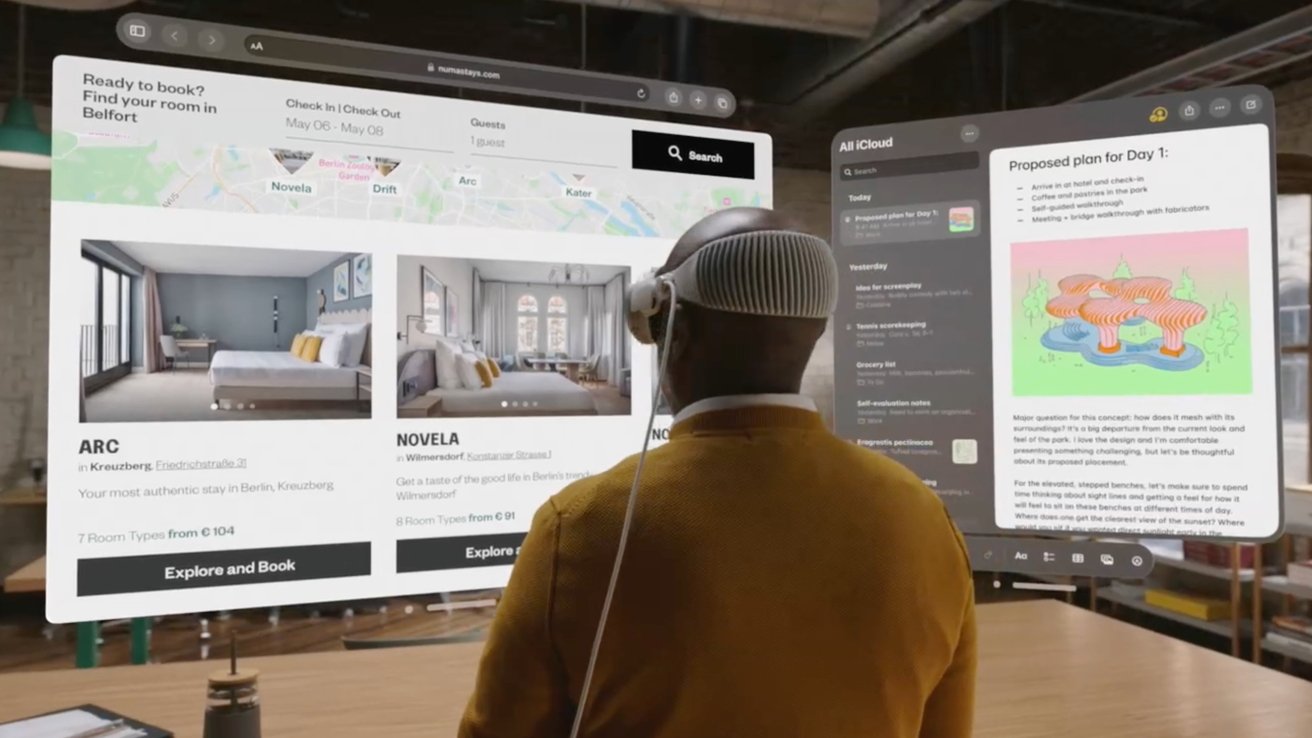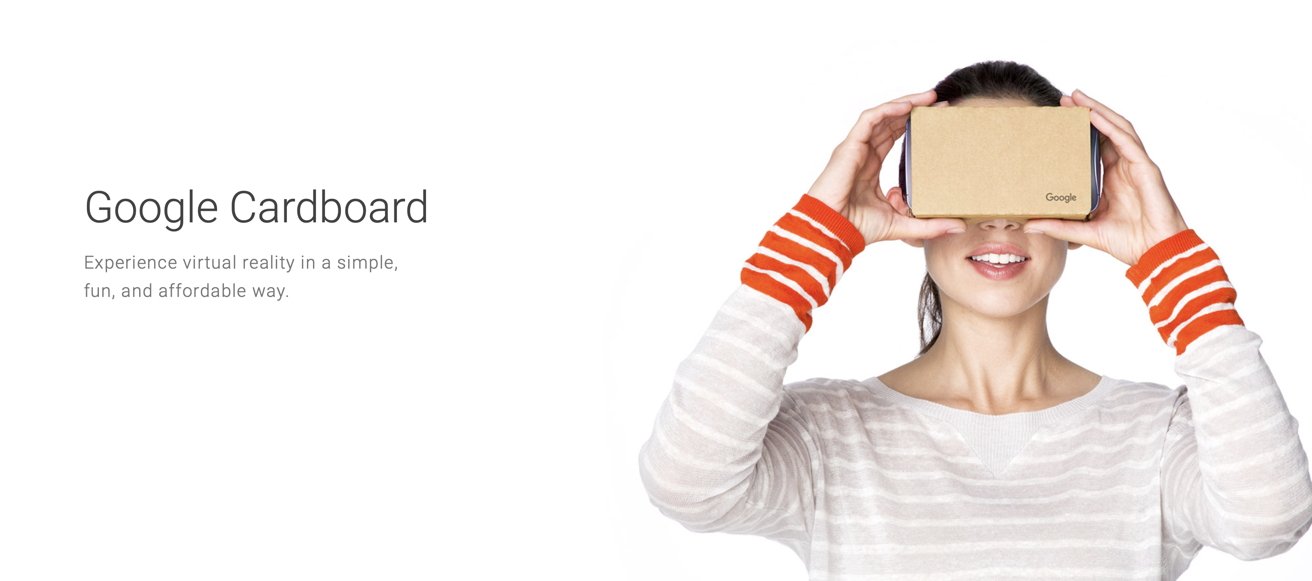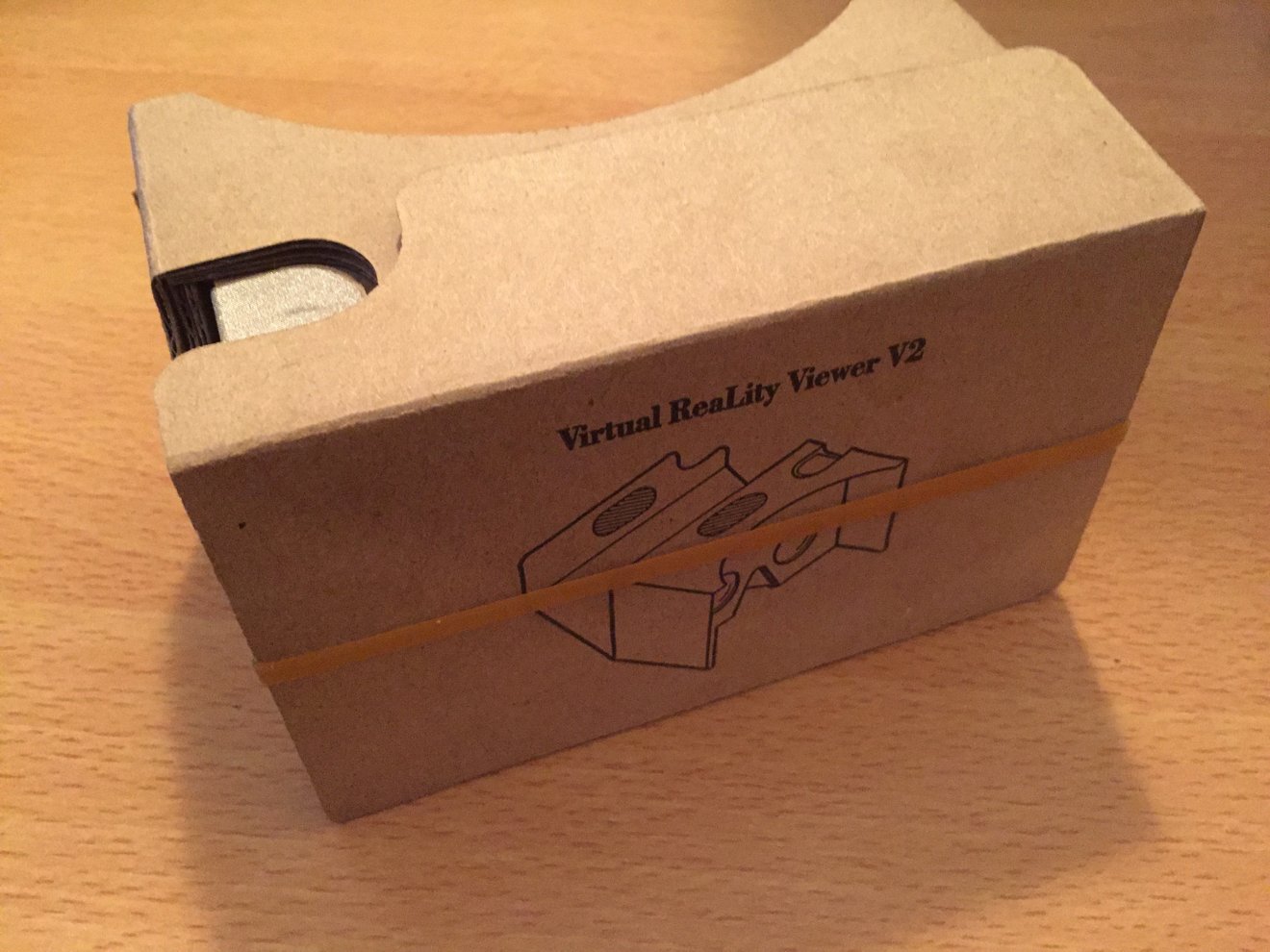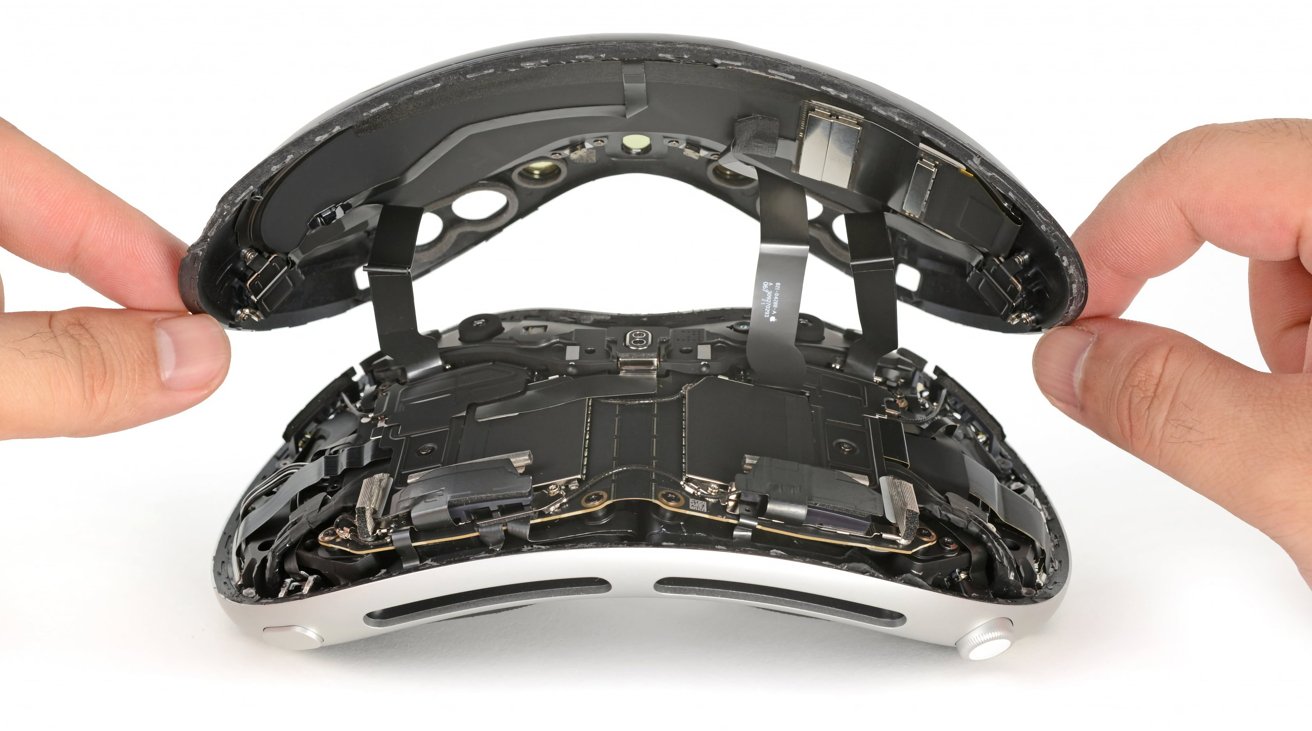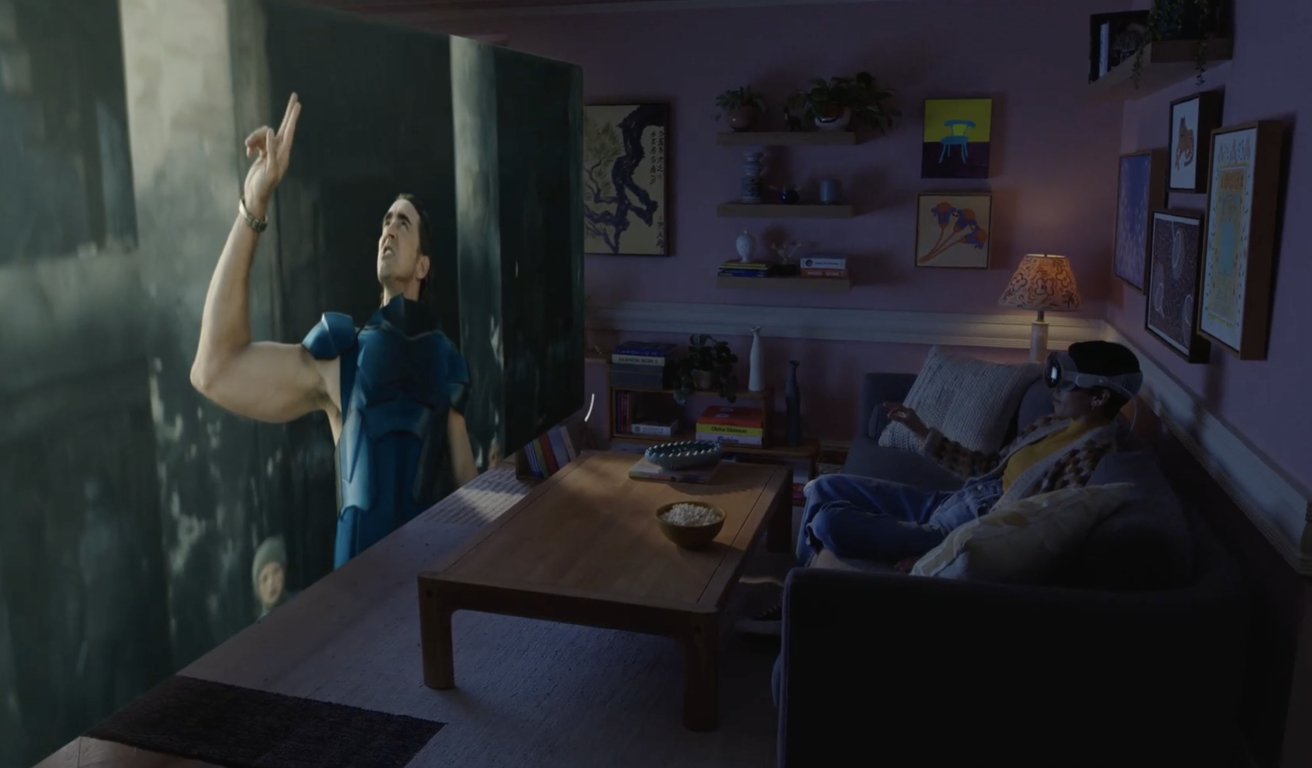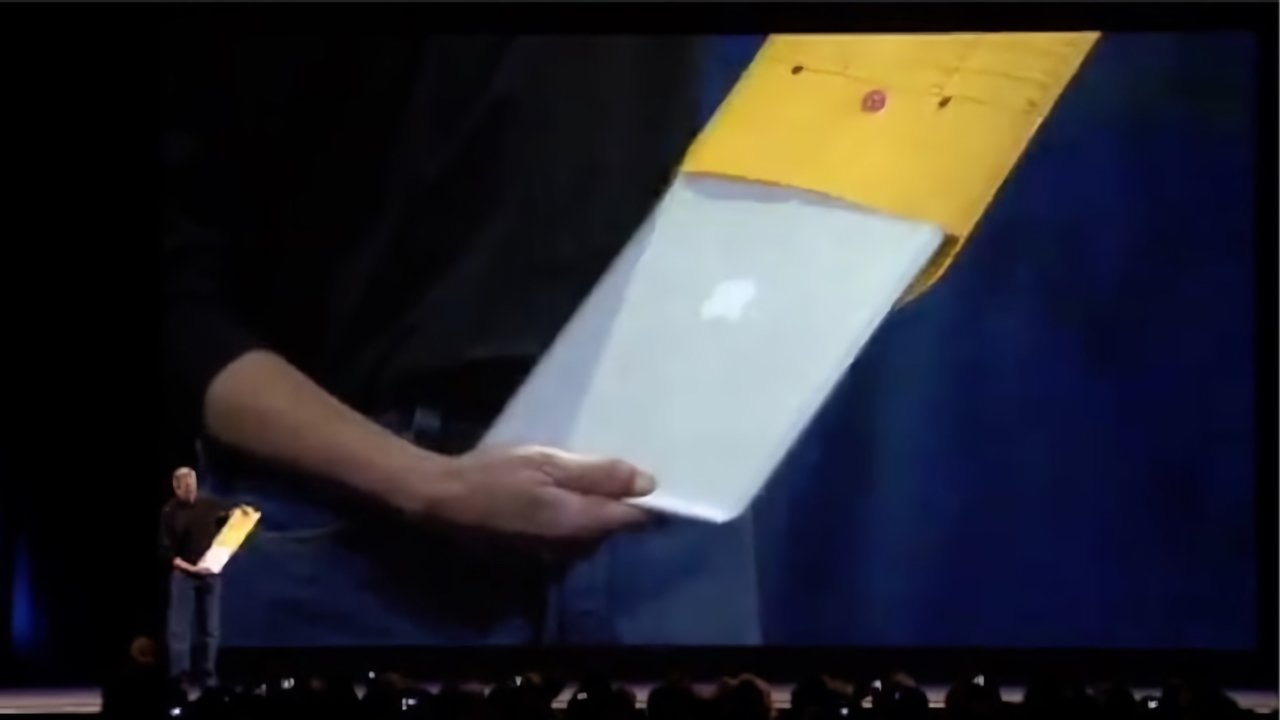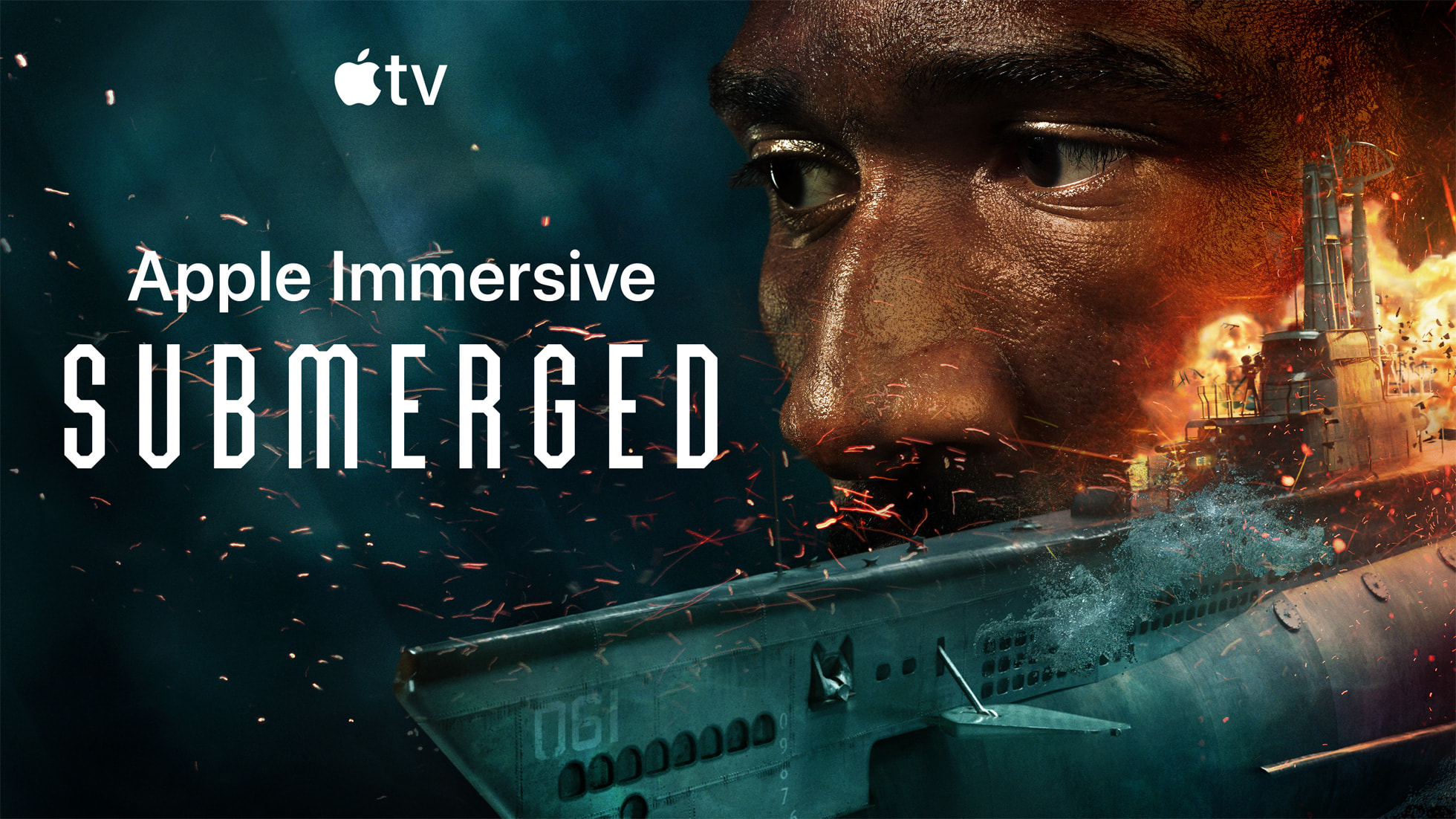Critics are, as they do, having a field day preannouncing Apple’s purported plans to “cancel” or “discontinue” the first iteration of its Apple Vision Pro Spatial Computing platform.
But what is Apple really doing with its immersive headset? Is Vision Pro a big tragic, befuddled mistake like the AI Pin, or is it just the first step in a meticulously planned rollout of the future?
Shock journalists love amping up ordinary things into alarming news. And since Google converted essentially the entire journalism vocation into being little more than interns click baiting for ad views, there sadly isn’t much else out there anymore but shock journalism and its bombastic claims that generally end up being nothing burgers.
John Gruber, one of the remaining Walt Mossberg-style pillars-of-calm-reality in the Apple world, on Friday commented on an alarming headline by The Information.
That article claimed “multiple people directly involved in building components for the device” as a source for the hot tip that “Apple has sharply scaled back production of its Vision Pro mixed reality headset since the early summer and could stop making the existing version of the device entirely by year end.”
Alarming! But wait, is it though?
“A headline like, say Vision Pro Sales Are Exactly in Line With Expectations’ is not going to hit people as a big story, but Apple Sharply Scales Back Production of Vision Pro’ does,” Gruber wrote.
His piece cited a report from last summer that stated, “Sony, the exclusive supplier of the high-resolution OLED displays in Vision Pro, only has the physical capacity to manufacture 900,000 units per year, and with two displays per Vision Pro, that put a maximum capacity on Vision Pro production at about 450,000 headsets for the year,” which is right around the number of headsets Apple is supposed to have shipped.
All the hubbub about Apple failing to sell enough, or failing to find interest, or desperately having to drastically scale back its plans — and whatever else they are claiming lately— seems to fall flat when you compare the number of devices Apple could possibly have built with the number the company is estimated to have sold.
It should also come as no surprise that Apple would not be continuing to build the 2024 Vision Pro forever. It’s nearly the end of the year already! My how the time flies. Seems like it was just the Year of Generative AI and now it’s deep into the leaves changing in Apple Vision Pro Year One.
If we do a little walk down memory lane, it’s almost as if the original Mac, the original iPod, the original iPhone, iPad, Apple Watch— and most everything else Apple has ever built— gets quickly replaced with a plus or a 2 or a 3G or whatever other new series identifier the company has used since the beginnings of the tech universe to signify that the new technology is indeed rapidly iterating to get faster, better, cheaper, or fancier every year.
The idea that this is occurring again is not really very alarming.
What if Apple had started with a cheaper, simpler AVP?
It’s pretty uncontroversial to say that Apple Vision Pro aimed at the tip-top of the frothiest peaks in the cream of the market for AR/VR immersive experiences. Was that a mistake?
A lot of people seem to think AVP “should have been” more mass market’ in the model of iPod, iPhone, Apple Watch and so on, so that this new luxury was more broadly affordable, and therefore could have resulted in a larger installed base and induced more Spatial Apps and Immersive Video content to use on it.
Imagine if Apple had pushed out a much simpler VR visor that cost a few hundred dollars. What then? Well, we have several examples of that already. Meta has been trying to make that work across five years now, after acquiring Oculus— which itself had been struggling to do the same. Apple even partnered on some level with HTC’s Vive to do VR development work on Macs back in the days of iMac Pro‘s release.
Perhaps Apple carefully surveyed the market in detail, as it is so uniquely good at doing, and specifically decided not to do something that wasn’t really working for anyone else.
In fact, we know that’s what actually happened because we all watched and saw it happen. Apple’s Vision Pro arrived years after the first-to-market piggies went wee-wee-wee all the way home.
If ‘going cheaper’ was the critical spark that would ignite VR and excite the masses, why didn’t Google’s humble DIY Cardboard VR blaze a trail rather than fizzling out and being forgotten? Why wasn’t the “effectively free” idea of just slapping an Android phone on your face The Thing that launched AR/VR into the stratosphere?
Rather than being a ‘me too,’ Apple decided to, as it does, follow its own path.
The New Take
Retrospectively examining how well Apple’s unique takes on PCs, MP3 players, smartphones, wearables, and so on have worked out, it should not be surprising that Apple’s slow, considered approach to launching a brand new Spatial platform would involve a completely new approach to the very AR/VR market that has failed to catch on as persistently as 3D TVs have.
Maybe the problem with Immersive Computing was that existing devices were too cheap? That would explain why customers kept leaving their headsets on the shelf shortly after buying them. They just weren’t good enough. And to be good enough, they could not be broadly affordable to everyone in Year One.
Apple’s demonstration of Vision Pro emphasized key features that were all both spectacular and frighteningly expensive. The resolution for the wearer is spellbinding. The EyeSight display even splurges on showing others a simulation of your eyes, quite a departure from Google’s literally paper Cardboard and the various helmets that make you look like you’re plugged into the Borg as cheaply as possible, while also stumbling in your own world and visually detached from the here and now.
Apple set a very high price point for Vision Pro to deliver an amazing product, knowing full well that this would price it out of the market for the kind of buyers who can generally afford even a quite-nice iPhone. A phone, a watch, and earbuds are all quite easy for anyone to splurge on. A $4,000 Television of the Future? Not so many.
That was on purpose! Apple knew, as the world’s leading expert in launching successful new OS platforms, that it made no sense to try to pursue Spatial Computing on the cheap.
A premium at different prices
In fact, The Cheap Android Way pursued by Google and its licensees has achieved the opposite of Apple in virtually everything already: Android tablets have been flopping longer than iPad has been flying. Demand for cheap Android watches have been miserable for longer than Apple Watch has been mesmerizing. Various incantations of Android TV were a minus even before Apple TV turned out to be a plus.
Apple has often but consistently achieved success by being more premium at a higher price. The critics have always bleated about it, but that’s the sound sheep always make when things aren’t going the way they like.
Apple crafts a premium approach differently for each market. In MP3 players, Apple launched iPod at a price that back in the day seemed absurd and “lame,” as one review put it. That was because rather than using a low cost, limited storage flash card, it packed in a fancy compact hard drive and a new-fangled, custom-designed rotating input controller to ‘think different.’
It took several years for iPod to grow from a niche premium luxury into the world’s most spectacular success ever in consumer tech.
In phones, Apple gobsmacked the market by delivering a ‘desktop class computing platform’ rather than a handheld, glorified PDA. That came at a premium so much higher than the cheap-o Windows Mobiles of the day that Steve Ballmer famously laughed off the threat because he saw no way, now how that Apple could gain significant market share in mobiles at that high of a price point when most phones were virtually free with a service subscription.
Again, it took several years before iPhone transitioned from a luxury phone to something everyone carries, unless they have no credit at all and forgot to save anything for later.
In tablets, Apple could take its existing technology and deliver iPad as a much better alternative to the status quo at a very competitive price. That wasn’t a big departure in strategy; it was just due to the fact that a light duty iPad didn’t have to cost a lot just present the web, email, games and other iOS apps on a larger screen.
iPad, unlike other platform launches of the Steve Jobs era, was effectively an instant hit, wiping out all competition in the first year and maintaining a commanding lead in tablets ever since. Certainly its affordability helped it attain that level of success faster, but that was again due to the fact that tablets were relatively cheap for Apple to design and build.
Not so with Vision Pro. It’s expensive because it’s chock full of really high-end everything, from its displays to its custom processors, cameras, and sensors. It was quite obvious that Vision Pro wasn’t going to fly off shelves at its high price. But there was a limit to how much Apple could scale it down before it got not-good-enough for anyone.
After the flops of Windows Phone and Surface, Balmer’s successor at Microsoft, Satya Nadella, took cues from Apple to launch his first big hardware product HoloLens as a comparatively expensive $3,000 premium prototype aimed only at developers and the Enterprise.
It wasn’t a hit but the sheep cut him a lot of slack. The idea that AR/VR wouldn’t work on the cheap wasn’t original to Apple, simply because it was quite obvious to anyone looking at the technology landscape. Cheap AR/VR literally makes you sick.
Even Google Glass took a stab at relatively lofty pricing, without any delusion that AR/VR could be subsidized solely by advertising and tracking. Starting at $1,500, Glass cost too much for a toy but the thing wasn’t compelling enough to be anything but a toy.
Again, for some reason the sheep largely bit their tongues— throughout the era of hijinks and Glassholes— and took a wait-and-see approach right up until Google officially terminated its half-assed basic prototype.
Isn’t it interesting that the sheep won’t call anything from Google, Microsoft, and Facebook a flop until it’s completely, officially toast, but won’t acknowledge anything from Apple as even ‘suitably sufficient’ until it rivals the iPhone in glorious success?
The high price of futurism
By aiming high— and delivering high— Apple could pique the attention of people with disposable incomes that haven’t been so enthralled with all the AR/VR that has come before. But there’s more than just expensive hardware in the Vision Pro platform.
Another component of Spatial Computing that’s really, inherently, stubbornly expensive is its software. Building apps for iOS and iPad and Apple Watch is already quite an undertaking financially for developers. Building a good app easily costs $100,000’s. But the large installed base of iPhone, iPad, and Watches drives volume sales.
The Catch 22 of an expensive platform device is that there are fewer users to subsidize the development of Spatial apps. A generation or two ago, LaserDisc offered a huge jump in fidelity over basic video tape, but the high price of players required movies on LaserDisc to generally be ‘priced for rental’ rather than affordable to many home collectors to purchase outright.
Given that the installed base of Vision Pro is ballparked at around half a million, it’s a tough sell for Apple to prod developers to spend tons of money doing the work to support Spatial Computing unless there’s a compelling business model. If it’s not a high-volume audience, it has to be a high-value audience, and the ultra high-end of the market is certainly that.
People with funds weren’t very curious about HoloLens or Glass. But Vision Pro? Apple is positioning it as the ultimate experience for people who can afford it, among its already premium installed base of iPhone and Mac users. Recall Apple Watch and AirPods debuted in a similar way.
Beyond Spatial apps, the other software that’s inherently expensive to create is Apple Immersive Video. Making what I called the future of television not only requires very high resolution cameras and lenses (two of them!), but also requires filmmakers to totally rethink how they shoot content.
It’s also all the more expensive to edit and deliver, simply by way of the fact that it involves much more data. The sharper and higher resolution content is also less forgiving. The price of everything involved with conceiving, creating, and collating Apple Immersive Video is spectacular, and there isn’t an easy way to recover that expense simply by charging a lot per download.
Apple’s entire strategy with Apple TV+ gives the impression that the company didn’t embark on delivering high quality films and new series just to lose a lot of money being an artist. Apple created its own media pipeline for understanding how to deliver compelling content you might want to enjoy privately on a flight, or on a massively large, virtual display at home.
Nobody wants to watch Netflix shovelware or YouTube podcasts in an immersive, cinematic cocoon. But Avatar or Mad Max in 3D? How about Apple’s own spectacular Foundation or Masters of the Air? Apple lined up unique rights to the former and bankrolled the latter’s creation itself.
Saddled with the apparently impossible dilemma of creating affordable immersive software content for its inherently limited initial installed base of Vision Pro users, Apple fixed things in part the LaserDisc way: 3D movies are priced to rent. Additionally, Apple also created a solution that didn’t exist in the LaserDisc era: a subscription service to its own bespoke Apple TV+ creations, which look spectacular on a massive screen.
People with money now have something dazzling to pay for. They can coddle the emerging sprout of Apple’s Spatial Computing platform until hardware prices can come down enough to entice the broader market. Until then, Vision Pro is reserved for commercial developers and the well-heeled, out of necessity. It simply couldn’t sustain itself at a lower price point because there’d be no point.
As Android has repeatedly proven, if you aim too low— in price and therefore value— you hit nothing.
This all happened before
Perhaps the best example of Apple approaching a catch-22 problem with rarified hardware at stupid prices is MacBook Air. Steve Jobs first introduced the envelope-sized machine in 2008 as the thinnest notebook ever, just 1.9 cm. However, it wasn’t just light and thin.
It was expensive. A big part of why it was so pricey was that to help it achieve its thinness, it used a solid state drive, meaning that instead of a spinning mechanical hard disk, it read and wrote storage to memory chips. At its debut, people complained that it could have been more affordable if Apple had at least offered a spinning hard drive version, or given up on the absolute thinness and instead just made a basic PC notebook with an Apple logo on it.
Across many years, pundits and critics have wailed about Apple’s fascination with light and thin, insisting that “everyone knows” that what everyone really wanted was a beefy laptop with cheap disk options and a big screen. MacBook Air was none of those things, and certainly wasn’t cheaply affordable to many.
Yet all these years later, beefy notebooks have only found their niche as gaming platforms and everyone else has gravitated to the biggest eclipse to occur in portable computing. The reason: Apple wasn’t trying to make a cheap device, it was trying to make a better one.
Back in 2008, a solid state disk was super premium. Today it’s effectively necessary. In between was a lot of competitive advancement that drilled the costs and prices down. Jobs’ vision for a light, thin MacBook Air was broadly reviled as impractical and limited, but the reality is that once you hit 40, or perhaps even 30, you start to appreciate that the weight of your laptop has a big impact on how much your back hurts.
A lot of the writers with the free time to share their opinions haven’t lived long enough to know what people who have earned money actually want.
With the debut of MacBook Air, notebooks got thinner and more SSD-sophisticated— which required not just new hardware but new OS level software. Apple blazed the trail, fearless of higher pricing, knowing that early adopters would pay more for something better.
MacBook Air sales didn’t explode in Year One. But a few years after they did, everyone else started copying. And that provides a key insight into why Apple shamelessly debuted Vision Pro with crazy specifications, regardless of its price. Apple knows how things are built and where prices are heading.
All about the base
Apple also knows that it will be critical to not just attract a large installed base for Spatial Computing, but also one that is commercially relevant. Google could probably have, at one time, counted every download of Cardboard interest and crowned itself the king of VR.
But such metrics are meaningless because Google didn’t do the work to create compelling software or services that could keep VR alive. It seems clear that nobody could have attracted enough attention to make everything from 3D movies to immersive video and spatial apps, if they were hobbled by the inferiority commensurate with a $300 VR rig. Perhaps not even for a better one costing $1,500.
The agitation drums are trying to bang out a baseline that suggests Vision Pro is over and has already failed, but the reality is that people bought it and content is slowly becoming available. The cost and other barriers to delivering new, desirable immersive content create the reality that there will simply be an initial dribble, at least at first.
Apple, as a deep pocketed content factory and subscription service, can maintain that trickle of content until enough of it collects to make a compelling case for buying a Vision Pro, or whatever comes next. Vision Air?
This all happened before, as well
Just like MacBook Air in hardware, Apple has already achieved long term successes in software and services. Remember back to the days of the first Video iPod? Apple’s initial collaboration with Disney to stream postage-sized videos of a very few TV shows in iTunes was initially scoffed at. But that library eventually, then quickly, grew.
Apple’s first launch of Movies in the iTunes Store was also initially sparse. Things changed. Today, you can watch virtually anything on your TV with an Apple TV box, using Apple’s services or one of its streaming partners. That also means you have huge libraries of high quality content on Vision Pro as well.
Apple’s first year of apps on iPhone were limited to its own bundled Mail, Safari, Maps, and so on. A year later, the initial third party developer apps were things like pretending to drink a beer, simple games, and a lot of fart apps. Yet given some time, the App Store became a treasure of appealing, powerful content that changed the way we work.
Today, Apple Immersive content is pretty limited. The company has several teams working on delivering adventure, animals, sports and travel series, and has crated a Spatial Apps platform for its iOS and iPad developers. It’s even delivered its first example of an immersive short film with Submerged, a 17 minute story that feels a lot longer and involving than the running time might suggest.
Submerged invites viewers onto a WWII-era submarine and follows its crew as they wrestle to combat a dangerous new threat.
The future is coming
It will take time for Apple Immersive to arrive at scale, just like it did for iTunes and the App Store. Years even.
Don’t fall for the clickbait sheepish bleating that demands more hay today. Sheep never imagine nor usher in a glorious future; they only stare at each others’ rear ends while standing in line for the trough and making their concerned sounds of limited importance.
Apple isn’t moving as slowly as these lambs might imagine. And it’s not going to run out of money while selling virtually all the world’s premium gear in every other segment.
When a more affordable Vision becomes achievable, Apple will have a portfolio of content to use on it. And the sheep will be bleating about something else, as they do.


